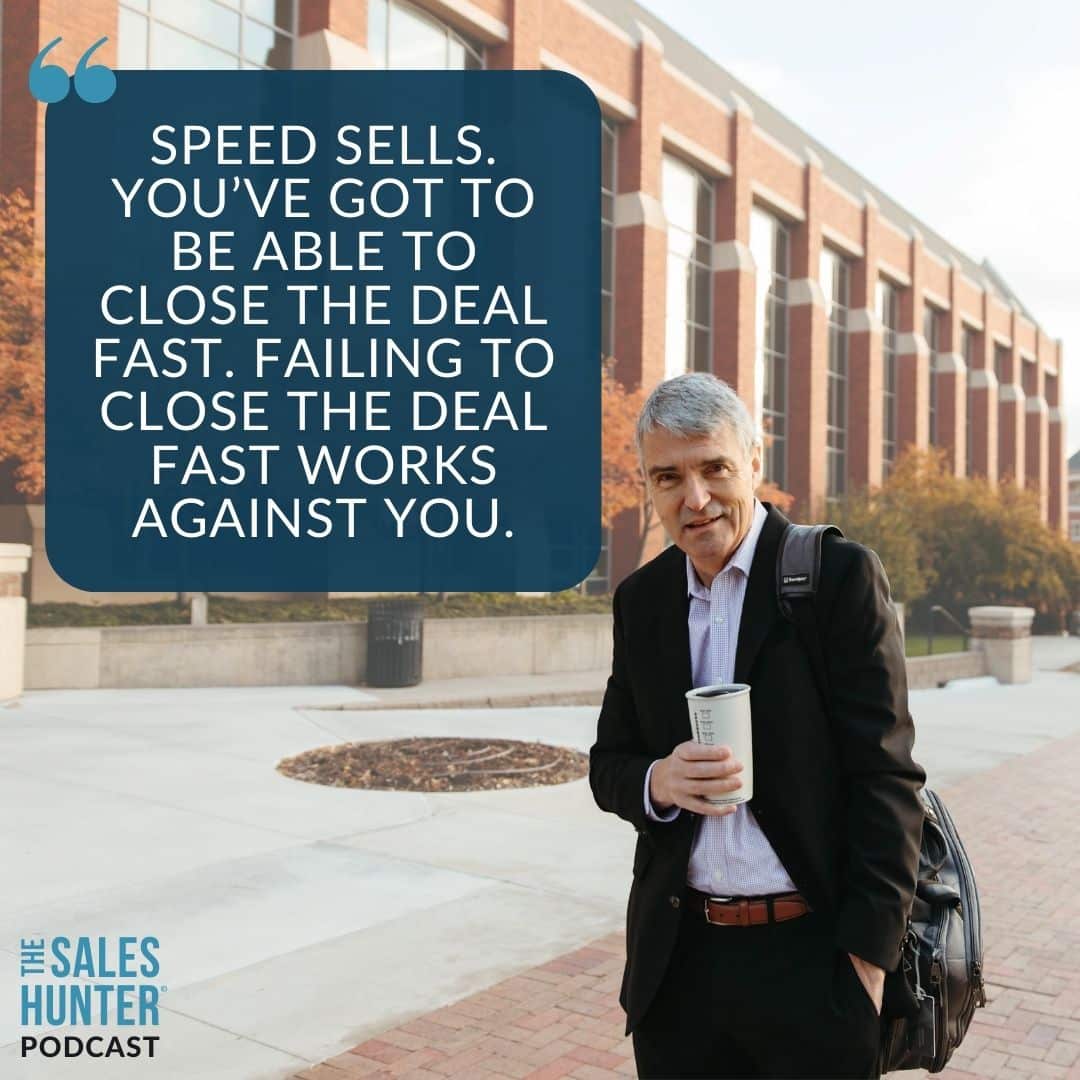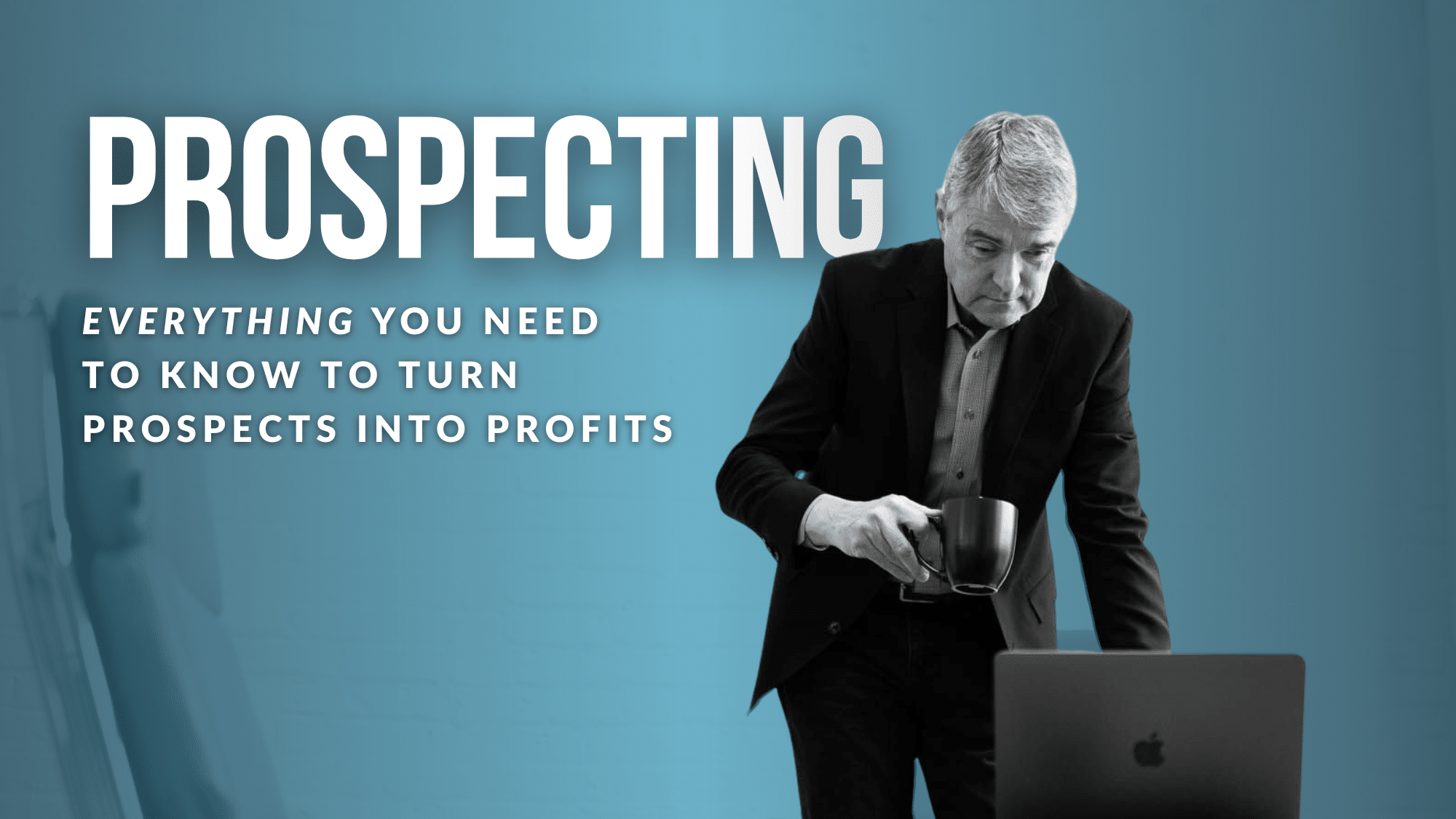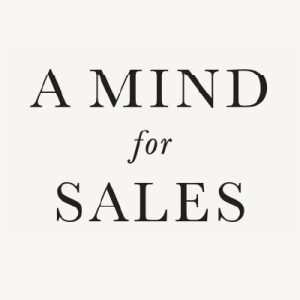What is it that I’m selling?
Being uncertain of your value proposition could certainly derail your prospecting efforts.
Use these six questions in the prospecting phase, and by the time you put the value prop on the table, they’re going to be buying.
**This blog is part of the 15 Reasons Holding Salespeople Back series**
1. What matters more, what you think, or what the customer thinks?
We may look at the value proposition and think, this is weak, this is not right.
But it’s not what we think that matters—it’s what the customer thinks.
We may not want this type of car, or computer, or whatever it is, but that’s not for us to decide. It’s the customer making the purchase.
What the customer wants determines the value proposition. Don’t allow your own perspective to determine the value proposition.
2. Why have people bought from you before?
When you start looking at this, ask yourself, why? There’s the value prop. That’s how you make numbers work.
Why have they bought from you before? Because you’ve helped them with something. If that’s in your value proposition, guess what? Your new prospects are going to want that.
Read these 6 Things Customers Need Before They Buy
3. Does the value prop match the outcome?
One of the reasons we prospect is because we want to understand if they have a desired outcome. Do they have a need? It may be a pain or a gain, but do they have something that we can help them with?
And if it’s something we can help them with, and the value prop matches up, then we have a winning solution. I have no reason to walk away from my value prop if it matches their desired outcome.
4. Are you solving a pain or a gain?
In the economic period we’re in right now, people are much more focused on solving a pain versus creating a gain. Value propositions take on more value if they help you deal with a pain. If I can help you deal with a pain, guess what? You’re going to win.
That’s great, but you’re going to have to stop and think about this because it’s going to impact the type of value proposition you share. You answer the ‘pain or gain’ question in the prospecting phase so that by the time you get to the point of delivering the value prop, you know exactly which it is that you’re selling and why the customer’s gonna buy from you.
5. What’s the role of time in this offer?
One of the things that I always strive for very early on is I want to understand the relationship between time and why they are making a decision.
Because if I’m prospecting you, and you show an interest in what I have, but you’re not going make a decision for two years, what am I doing talking to you right now?
You see the role of time changes the value proposition dramatically.
6. What would happen if the customer didn’t buy?
More than anything else, this question determines the value of the value proposition because if the customer doesn’t buy, what’s going to happen to their business?
What’s going to happen to their life?
If I can begin to get them to see that in the prospecting phase, by the time I put the value proposition on the table, they’re going to be buying.
What is ‘Land and Expand?’
and How You Can Use It to Grow Your Sales
+How to expand with new and existing customers by establishing yourself as a solution-provider.
What sparks change?
What generates revenue?
Mike Simmons advocates for a catalyst, a champion within the organization that deeply cares about the problem you can solve.
Listen to the conversation in Thursday’s episode, 8/10!
The Most Comprehensive Prospecting Training Available.
If you…
- Need to save time and learn to leverage social media. This training is for you.
- Struggle to get past gatekeepers. This training is for you.
- Desparately need to develop my prospecting plan. This training is for you.
- Wish you could learn communication styles for different prospects. This training is for you.
- Seek to reach the C-suite and senior-level people This training is for you.
54 meticulously crafted modules at your fingertips.
Click here to learn everything you need to know about turning prospects into profits.
Copyright 2023, Mark Hunter “The Sales Hunter” Sales Motivation Blog. Mark Hunter is the author of A Mind for Sales and High-Profit Prospecting: Powerful Strategies to Find the Best Leads and Drive Breakthrough Sales Results.










